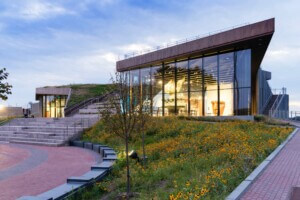“Meet me at Tiffany’s” is a phrase New Yorkers may only use when directing hopelessly lost tourists to a rendezvous on 5th Avenue. But the iconic status of Tiffany & Co.’s flagship store far surpasses its starring role as Audrey Hepburn’s go-to breakfast spot. It’s been a landmark for tourists and locals alike since its opening in 1940, though the luxury jeweler has roots going back to 1837, which means that OMA had nearly two centuries of legacy to revamp when it took on the flagship’s renovation, the store’s very first.
The 10-story limestone building at 727 5th Avenue has just been renovated and expanded, finally opening this spring to reveal a “jewelry box” glass topper that seems to hover over the masonry mass. OMA was tasked with the exterior restoration and addition, as well as mechanical system updates, while Peter Marino took charge of the interiors.
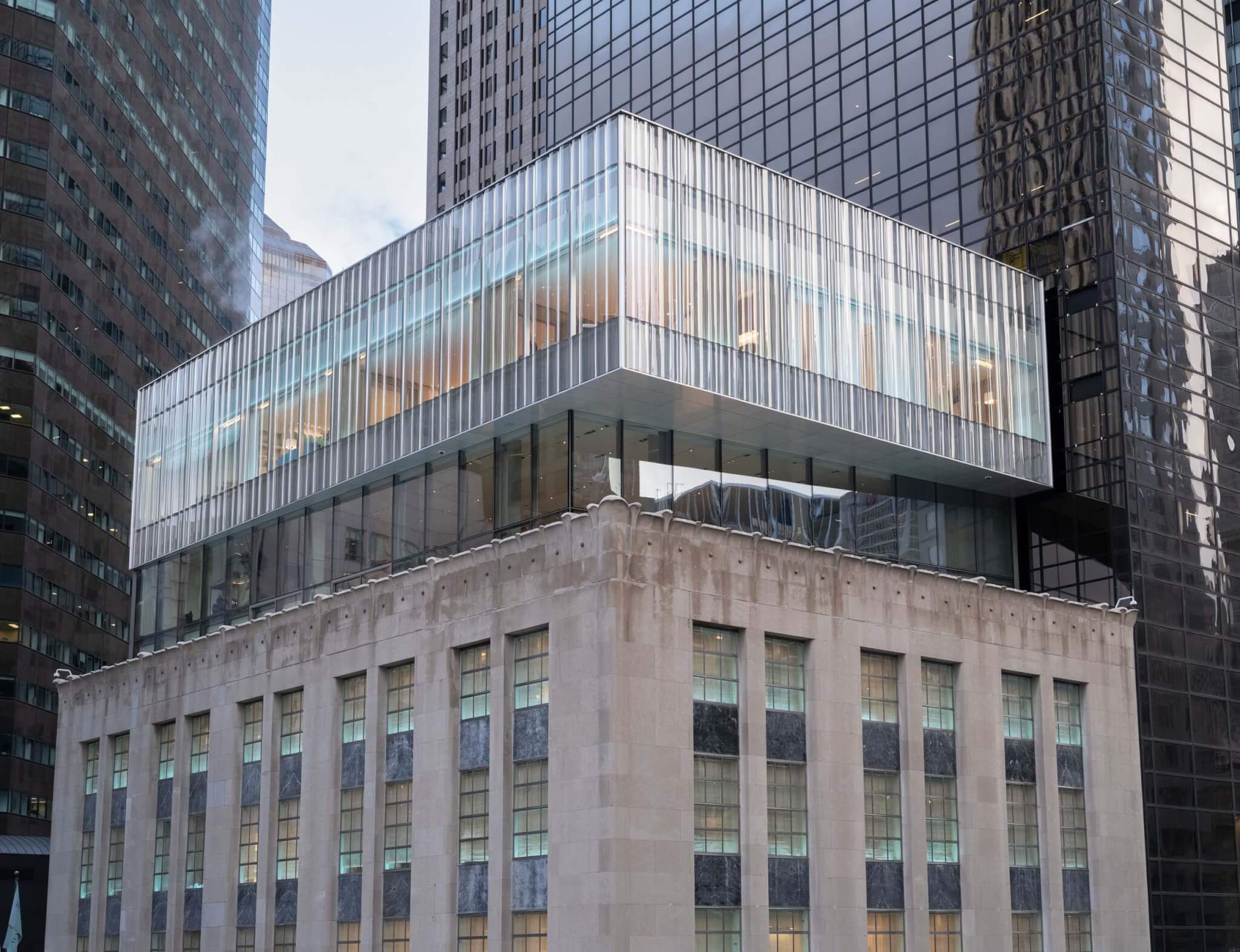
On a hot July morning at the jeweler’s headquarters, Jake Forster, associate at OMA, explained that the sculptural details found in the new glazed addition crowning the flagship were inspired by Tiffany’s iconic designs—like the cut-crystal drinking glass I held in my hand. Visible on the building’s historic doors and hardware, and especially in its famous Atlas Vase, these art deco bas-relief forms inspired the designer to experiment with slumped glass for the expansion.
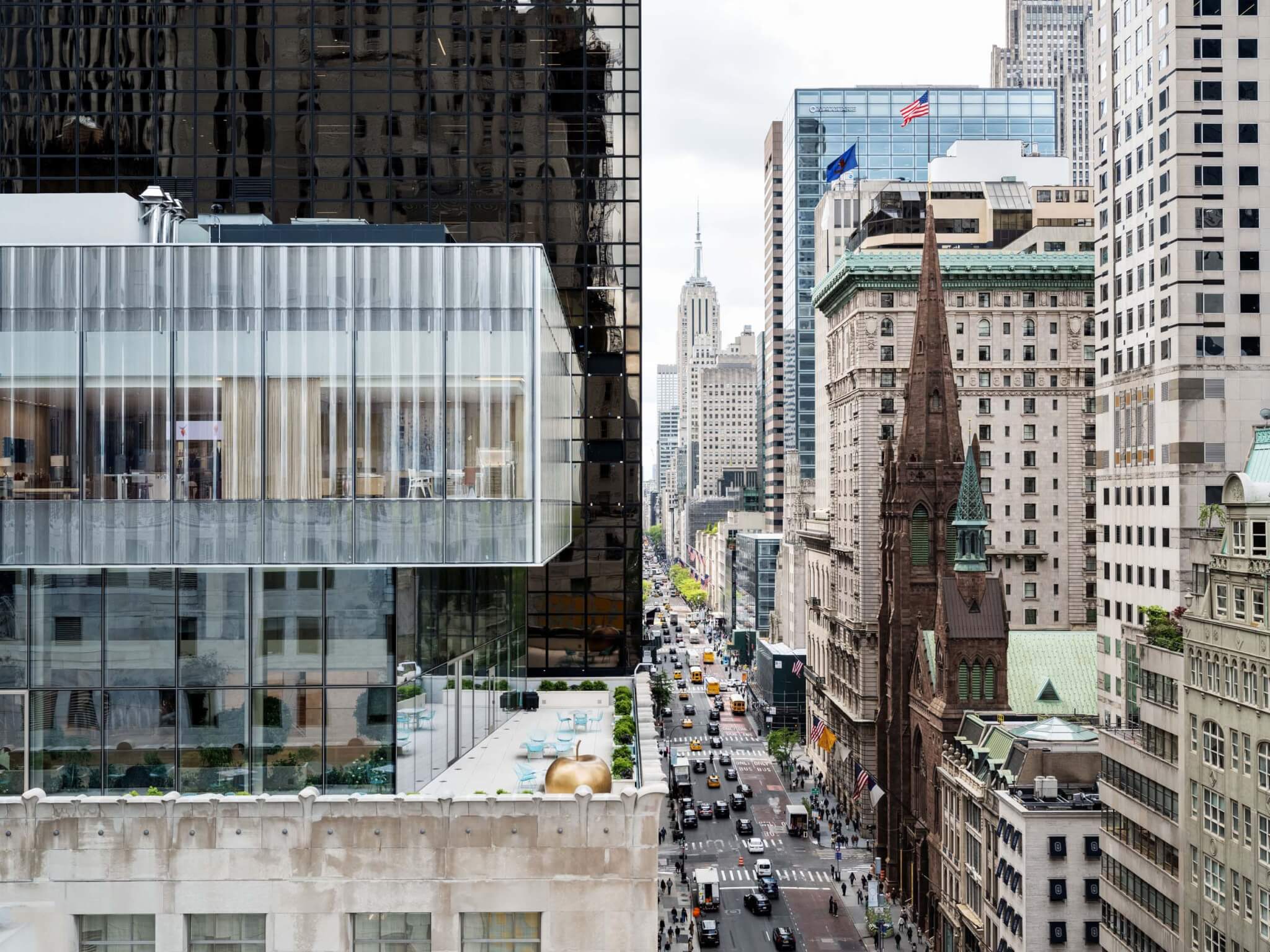
The process of making slumped glass was custom to this project and resulted from a close collaboration between OMA and glass manufacturers Seele and Sunglass. Molten glass was draped over a mold, taking on its wavy shape as it cooled, a process that demands the highest level of craftsmanship and customization. It hearkens back to historic glassmaking techniques for making curved glass—special details which were status symbols in 19th-century society. This level of craft is, of course, appropriate for a luxury artisan with iconic glassworks scattered throughout its oeuvre, in equal measure to diamonds.
The 2-story addition’s hovering effect is achieved through the translucent character of two distinct glass types as well as a subtle setback. OMA replaced a previous—and odious—1980s rooftop addition with two new glassy floors that host events, clients, and exhibitions as well as showcase the brand’s history. The bottom is recessed to make way for a terrace with sweeping views of Manhattan and Central Park, and the top cantilevers above it, slightly wider at the back of the lot and narrowing as it approaches 5th Avenue to allow for more terrace space. “The new design flaunts translucency rather than transparency,” Forster stated. “It plays with the simultaneous needs for privacy yet a desire for weightlessness.” OMA opted to experiment with a slumped glass technique that offers not only privacy but texture, too, in contrast to the mirrored, glassy fronts of the surrounding skyscrapers.
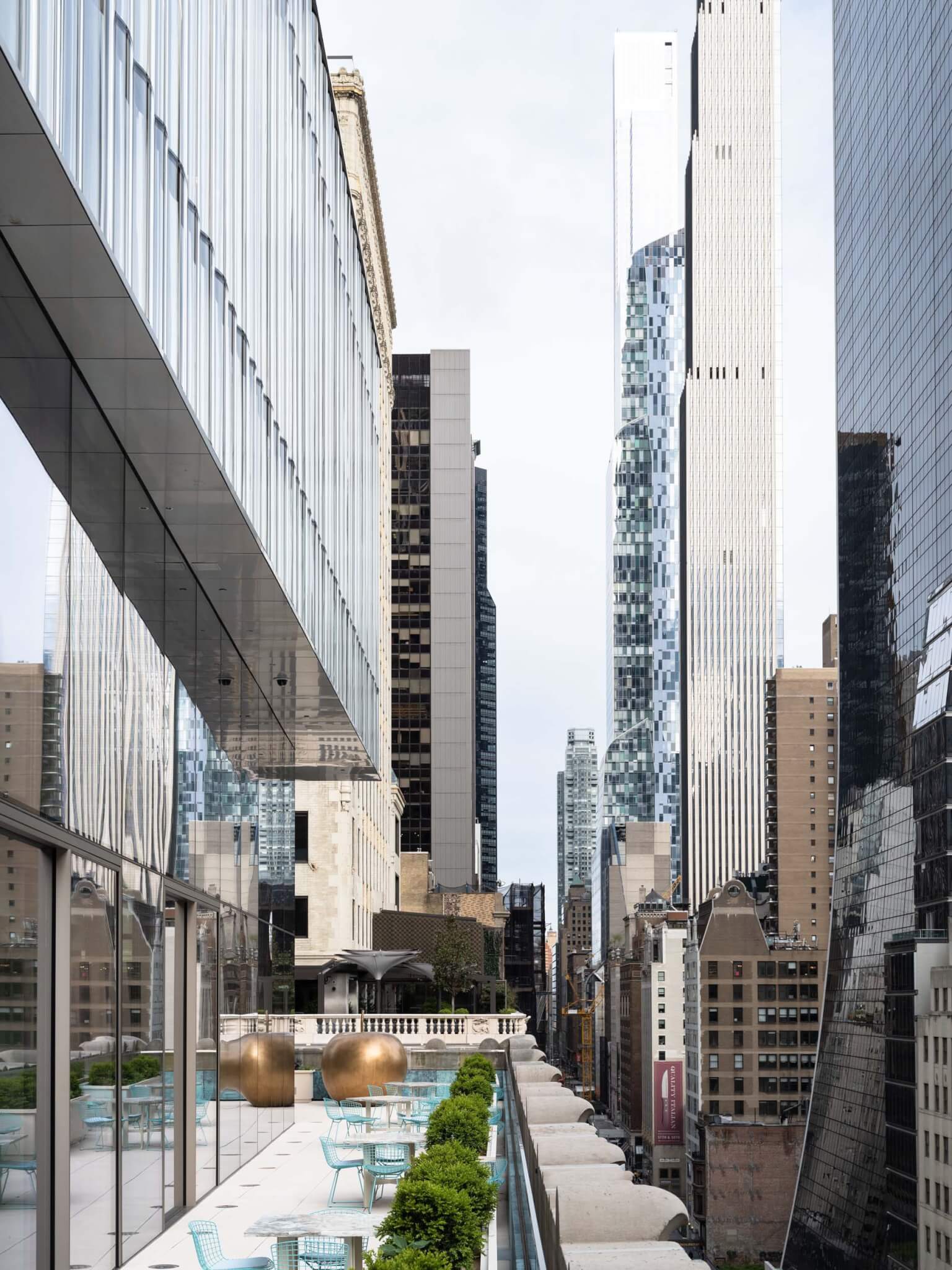
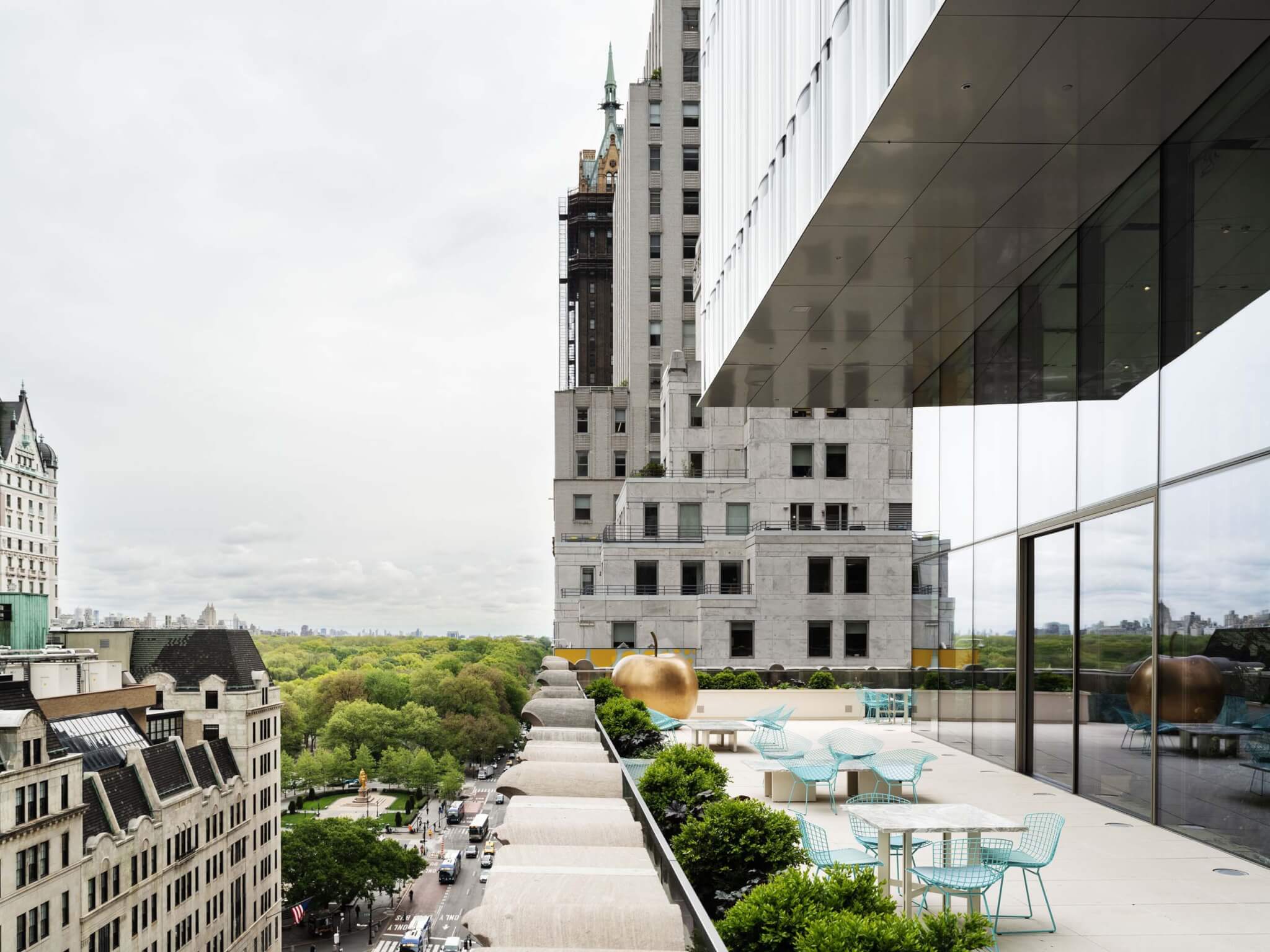
The slumped glass was also chosen for its structural efficiency: It requires less vertical support than more standard applications. The curves are created from one mold and lifted into place in alternating ABAB patterns to offer more variability, softening the otherwise boxy form. Looking out from within the space, there is also a funhouse effect as it subtly warps the Plaza Hotel beyond at certain angles. It seems like the top floor is draped with a curtain or thick velvet cloth, not unlike the small blue boxes customers bring their Tiffany’s wares home in. The effect is strengthened by OMA’s decision to light the entire glass mass up at night with Tiffany Blue bulbs, making the entire addition an extension of the iconic wrapping.
“The result is a translucent vitrine to signal new flagship activities—a contemporary bookend to the historic building and symbolic launch of a renewed brand,” Shohei Shigematsu, partner at OMA, offered.

During my visit in July, workers were still putting the finishing touches on the interiors, while plants and Tiffany Blue outdoor furniture were scattered about the terrace. But as Forster and I looked over the limestone parapet toward the panoramic view of Central Park, the feeling of being enveloped by the city and its myth of glamour took hold. When prompted, Forster said his favorite details from the project were the thinness of the joints at the northwest corner and the concave piece of aluminum at the building’s bow that holds the artful glass together. “It’s the things that look the most effortless, or become the most overlooked, that actually take the most work and invention,” he said. This attention to detail is an ethos shared both by OMA and its iconic client.
Project Specifications
- Design architect: OMA/Shohei Shigematsu
- Partner: Shohei Shigematsu
- Associate: Jake Forster
- Project architect: Caroline Corbett, Ninoslav Krgovic
- Interior architect (GF–F10): Peter Marino
- Executive architect: CallisonRTKL
- Structure: WSP
- MEP: WSP
- Lighting: Tillotson
- AV: Theatre Projects
- Acoustics: Cerami Associates / Henderson Engineers
- Graphics, Signage, Wayfinding: 2×4
- Vertical transportation: Edgett Williams Consulting Group
- IT/Data/Security: Tiffany & Co. (In-house)
- Sustainability: Paladino
- Client Rep/Project Managers/Cost: MACE Group
- General contractor: Structure Tone
- Facade: Heintges
- Glass: Seele (manufactured by Sunglass)









